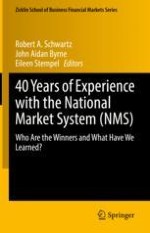2022 | OriginalPaper | Chapter
5. Fair and Level Playing Fields: A Good Regulatory Goal?
Authors : Amber Anand, Alan Hill, Bill Harts, Nina Mehta, Gary Stone, Adam Sussman
Published in: 40 Years of Experience with the National Market System (NMS)
Publisher: Springer International Publishing
Activate our intelligent search to find suitable subject content or patents.
Select sections of text to find matching patents with Artificial Intelligence. powered by
Select sections of text to find additional relevant content using AI-assisted search. powered by
